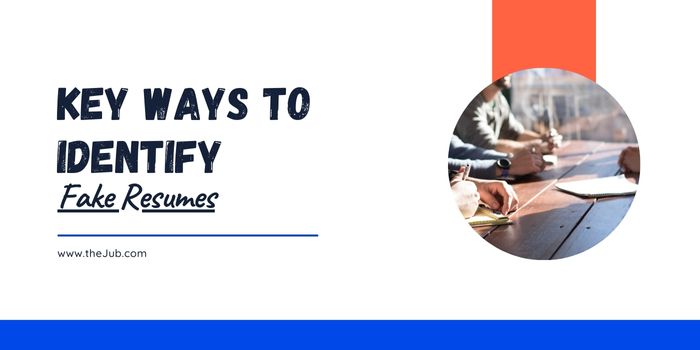

With the rise of technology, it has become easier for job candidates to falsify information on their resumes. This article will discuss various ways employers can identify fake resumes and ensure they are hiring the most qualified candidates.
In a perfect world, every resume that lands on your desk would be 100% accurate.
However, we live in an era where the pressure to stand out from the crowd sometimes leads candidates to embellish or even falsify their resumes. This is where your detective skills come into play.
While fake resumes can be sophisticated, there are usually some telltale signs that something is amiss. Here are some red flags that may suggest a candidate has provided a less-than-truthful account of their experience and qualifications:
If a candidate’s job titles and responsibilities seem to be a mismatch, or if their roles have escalated too rapidly without a logical progression, it may be worth a closer look.
An unwillingness to provide details about roles, projects, or accomplishments can be a sign of resume fakery. Candidates should be able to describe their duties and achievements in some detail.
When candidates make broad claims about their skills or accomplishments without providing specifics or evidence to back up those claims, it could be a cause for concern.
Pay attention to the timeline of a candidate’s work history. If there are errors, unexplained gaps, or overlaps in employment dates, it may indicate the candidate is less than honest.
Candidates who overuse industry jargon or buzzwords may attempt to mask a lack of genuine knowledge or experience.
Identifying potential red flags is the first step. But how do you verify your suspicions? Here are a few methods you can use:
Never underestimate the value of an excellent old-fashioned reference check. Speaking directly with previous employers or colleagues can provide insights into a candidate’s work history and verify their claims.
A quick Google search can reveal a wealth of information about a candidate. Check their online presence on LinkedIn and other professional platforms to see if the details align with their resume.
For specific roles, conducting a skill test can effectively verify a candidate’s proficiencies.
Ask behavioral questions about the candidate’s skills and experiences during the interview. Genuine candidates can provide detailed examples, while those who’ve falsified their resumes may struggle.
Yes, some people make fake resumes, whether to exaggerate their qualifications/experience or to hide gaps in their work history.
There you have it! A comprehensive guide to identifying and dealing with fake resumes. While the challenge of fake resumes can seem daunting, equipped with these tips and techniques, you’ll be well on your way to becoming a resume verification pro.
Fostering an honest and transparent recruitment process helps spot fake resumes and ensures you attract candidates who share your company’s values.
So, keep these tools at hand and lead the charge in building a team based on trust and integrity. Happy hiring!
Title: Ways to identify fake resumes
Author: Becky is a contributor for theJub. She’s a writing and talent acquisition specialist who loves to apply her skills through creative writing and editing.